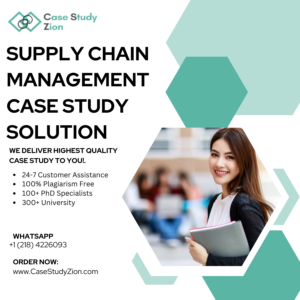No One Knows Your Strategy Not Even Your Top Leaders
No One Knows Your Strategy Not Even Your Top Leaders? Menu Tag Archives: I was invited to America’s top dinner

Supply Chain Management consultants must be adept at striking a balance between strategy and tactics for optimal business growth. By taking appropriate strategic steps, these advisors should understand that strategic moves may unlock exponential growth potential within their clients’ businesses.
Each case study in this online guide explores a different set of supply chain issues. To begin working on one, visit your Account Management screen and visit Library.
An effective problem statement will outline your research problem and define who it affects, while outlining current conditions with specifics like costs, revenue losses, productivity gains etc. Supportive evidence such as staffing reports, survey data or any relevant statistics may also be provided here.
Effective problem statements outline what an ideal situation would look like, how the current situation impacts individuals and propose solutions. They help keep teams focused on the task at hand without deviating off track; additionally they define scope and goals of projects; for instance, those working on supply chain case studies might want to focus on decreasing expenses or freeing up revenue streams while simultaneously exploring intangible benefits like increased customer satisfaction.
As with any business, supply chain management requires managing large volumes of movement – whether that involves people, products, raw material, data or money. Companies must ensure they can deliver products to customers quickly and at a competitive price.
Nimble thinking is essential to success in this industry as disruptions may arise at any moment – be it poor weather Developing New Growth Strategy causing freight delays or warehouse closure. Being prepared with backup plans for every potential outcome is paramount to your success.
Candidates are challenged to utilize their knowledge and tools learned in class to come up with creative solutions to address challenges outlined in case studies. Candidates are also encouraged to test different ideas to see which work best in simulations that accurately mirror real supply chains; solutions that work well here may prove effective for real world supply chain management as well.
An efficient supply chain management (SCM) program enables companies to reduce costs, boost efficiency and bolster their bottom lines while quickly responding to market changes or demand shifts, regulatory shifts or natural disasters or foreign policy concerns.
Interviewers will evaluate your ability to define a problem, create a structured approach and arrive at effective solutions. Case study interviews are essential tests of analytical abilities, business acumen and your ability to create tangible improvements within supply chain operations of any given company. They put you under immense scrutiny during each step and each must demonstrate these traits for maximum impact during an interview process. Your recommendations must include specific, measurable, attainable, relevant and time-bound (SMART) goals that take into account short-term gains as well as long-term sustainability. Finally, quantitative analysis should be presented to demonstrate the value of your proposed changes – specifically how they will result in cost savings, improved customer service levels, and supply chain efficiency improvements. This will allow interviewers to understand how your recommendations affect their company’s bottom line.
Supply chain management encompasses every stage in the product life cycle for any given company, such as design, production, purchasing, shipping, distribution and sale – including end of life product collection and disposal – while also integrating this process with those from other companies to form an interdependent network.
Supply chains can present unexpected issues, and effective managers must be able to respond swiftly. When weather delays a shipment or warehouse closure occurs, skilled managers must use backup plans to minimize disruptions while simultaneously looking for potential cost savings through efficient logistics solutions.
UT’s MS SCM Online Program challenges students to apply knowledge gained from readings and lectures to real-world cases. For instance, Cincinnati Seasonings case study addresses an essential supply chain challenge: improving and expanding supply chains while keeping costs and inventory levels at manageable levels. Successful management requires effective trade-off evaluation which requires strategic thinking skills and decisions that align with overall business goals.

Supply chain management involves optimizing a company’s distribution network in order to reduce costs, increase efficiency and enhance customer satisfaction.
Cincinnati Seasonings provides an example of an ongoing supply chain challenge: meeting product demand while simultaneously Lowering Operating Costs and inventory levels efficiently. Your ability to weigh pros and cons when formulating recommendations will be an asset during case interviews.
Supply chain design involves making decisions that shape how the components of an organisation’s supply chain interact, from raw materials and finished goods through delivery services and customer care, as well as revenue growth. A successful design will reduce costs, enhance customer satisfaction and help the business increase revenue growth.
Step one in developing an efficient supply chain network is gathering and organizing data from multiple sources, including ERP (Enterprise Resource Planning) systems, historical sales information, inventory records and transportation logs. Doing this will allow us to establish a baseline for current operations that will improve modelling accuracy while encouraging informed decision-making processes that lead to resilient supply chain networks.
Once a chosen scenario has been implemented, it’s essential to closely track key performance indicators and assess its success against its expected outcomes. This will provide invaluable feedback regarding any ways it could be improved further.
Inventory management is an integral component of supply chain management that directly affects customer satisfaction and financial results. Finding an equilibrium between making products available when needed while also avoiding excessive stock can be tricky – not to mention costs such as transportation, storage and insurance fees!
Successful inventory management relies on accurate forecasting to align production schedules, procurement strategies and distribution channels with product demands. This ensures businesses don’t run out of popular items while simultaneously saving capital by not holding onto excess inventory.
Inventory Management Techniques such as first in, first out (FIFO) and last in, first out (LIFO) can help ensure timely disposal of products as part of a company’s overall business strategy. Inventory can also be organized according to sales history or other criteria that help companies better track seasonal trends as well as focus on their highest demand items first and track aging products for early disposal.
Transportation is a key aspect of supply chain management, ensuring products reach their destinations efficiently and quickly. A well-planned transportation system can reduce lead times while simultaneously improving responsiveness resulting in greater customer satisfaction.
Shipping goods comes with its own set of advantages and disadvantages. Road, rail, air, and sea transportation modes all offer their own unique set of benefits for business operations based on factors like distance, urgency, and cost.
Providing optimal transportation plans that reduce time and costs are the hallmarks of quality supply chain design. This means identifying the fastest routes while simultaneously shortening travel time. Real-time weather data also provides invaluable intelligence that allows companies to ensure they’re not making decisions that cost money; this is known as supply chain intelligence. A Good Supply Chain will utilize such information quickly when responding to changing conditions.
Distribution or warehouse management – however you refer to it – is an integral component of supply chain management, enabling products to reach stores at the appropriate times and places, thus maximising business profit.
Case studies in this collection illustrate how to manage product and information flows among various interlinked supply chain entities, such as factories, trucks, storage facilities, delivery routes and stores. Successful management requires striking an equilibrium between cost efficiency and responsiveness.
As you work through case study simulations, apply what you have learned in readings and class lectures to resolve problems as they arise. Your goal should be to keep supply chains running smoothly for 30 days with lower operating costs and inventory levels while meeting customer demand at increasing numbers of stores. You may achieve this by changing supply chain design (Facilities, Vehicles and Routes), factory production rates, delivery schedules or drop amounts at facilities (Facilities), or by altering factory production rates or production rates per facility and delivery distance between stops on vehicle routes (Facilities).

SCM Globe provides an impressive library of supply chain management case studies. Each one delve into unique issues. You can access them by visiting your account management page and clicking “View Library.”
Once you have examined a situation and identified potential solutions, you must create recommendations that meet the company’s goals and objectives. Evaluating tradeoffs is also an integral component of Problem-Solving.
Ability to effectively analyze a supply chain problem and devise practical solutions is an integral component of Supply Chain Management. You need to assess tradeoffs between various options available to you and propose recommendations that match with company goals and objectives. Trade-off evaluation is key in case interview success; it showcases both your analytical thinking abilities and strategic acumen.
Supply chains are complex systems, and it’s crucial that companies keep an open mind when facing unexpected events such as natural disasters or supplier bankruptcies. A Strong Supply Chain management system enables companies to mitigate risks quickly while adapting quickly. Furthermore, having one can lower costs and increase customer service.
Supply chain management refers to the practice of overseeing supply and demand to create customer-focused businesses. This involves orchestrating all departments within an organization towards one common goal – providing high-quality products on time and place for delivery to customers. Supply chain management can be especially crucial in perishable product companies that must ship orders quickly before spoiling.
Applying this service to write your case study is straightforward: just fill out an order form with topic, instructions, and deadline information and click submit. Our expert writers will bid on your study; review each writer’s profile, ratings, and performance statistics before selecting an offer from them. In addition, communication with writers during this process allows for draft requests or outlining, feedback contributions, etc.
As you assess the challenges in this supply chain, use what you learned in class and through research to devise solutions to each problem. While some solutions will prove more successful than others, each will help increase efficiency and responsiveness of this particular supply chain.
Supply chain management entails the activities that link manufacturers, suppliers and retailers. It ensures products reach customers in an orderly manner while helping companies reduce costs and enhance customer satisfaction.
Six Sigma techniques can be an excellent way to optimize a company’s supply chain. By eliminating variations and improving productivity and efficiency, Six Sigma techniques lead to significant results that lead to greater quality, productivity and efficiency overall.
SCM Globe provides another means of optimizing a supply chain: its logistics simulation tool enables users to develop various supply chain designs and run simulations to test how well they work; the best designs will have high scores on its metrics metric scoreboard – helping you determine which model to implement into your company and then track its effects over time.
As a supply chain professional looking to optimize company performance, having an effective case study tool is vitally important. It will allow you to identify where your company stands among competitors and how best to move forward; plus it will demonstrate which solutions have worked or not worked elsewhere.
The SCM Globe Library includes numerous case studies that address various topics. Each has an introduction that summarizes its content; you can access them by heading over to the Supply Chain Management Case Studies section (see Table of Contents on right).
These real-life examples showcase the variety of strategies companies employ to achieve supply chain excellence. Innovation, collaboration and adaptability are essential components to achieve success while an optimized and synchronized value network must also be in place. The lessons from these case studies apply across industries of any size.

Case Study Analysis is one of the most prevalent research methods utilized in supply chain management. It allows researchers to gather extensive data for in-depth examination of an issue at hand.
At the start of a supply chain management case interview, the first step should be identifying clearly defined issues and problems. Doing this will allow for more precise analysis and effective recommendation development.
Samsung Electronics is one of the world’s premier electronic producers, serving as a key subsidiary of the Samsung Group and excelling in consumer electronics, semiconductors and telecommunications as well as home appliances such as refrigerators and washing machines. Furthermore, they produce mobile devices such as smartphones and tablets as well as televisions.
Lee Byung-Chull founded the Samsung Group as a trading company in 1938, initially operating out of Shanghai. By 1960, however, they had expanded into services businesses including insurance, broadcasting and securities; as well as acquired several businesses such as oil refinerys, nylon plants, cement factories and department stores.
Sam Sung Electronics not only engages in its business activities, but it is also involved with numerous charitable endeavors and initiatives, such as supporting Korean language programs at universities worldwide and saving the endangered Jindo dog; supporting numerous sporting events and environmental initiatives is another area in which it engages.
Effective supply chain management systems help businesses reduce costs, enhance customer satisfaction, and remain competitive in their respective marketplaces. To do this successfully requires using multiple strategies – shortening lead times, cutting Transportation Costs, building strong supplier relationships. Furthermore, performance metrics must be analyzed in order to identify areas for improvement – this requires using a structured approach which allows one to recognize strengths, weaknesses, bottlenecks and opportunities for optimization.
An essential aspect of any successful case study solution service interview is being able to assess trade-offs. This involves considering long-term effects of different options and making recommendations that support company goals while taking into account cost, risk and complexity factors of each option being explored.
7-11 has developed an effective process for identifying what items are most popular among their customers, which enables the store to keep inventory levels down while guaranteeing fresh shelf contents. Furthermore, 7-11 employs technology to track sales activity which enables them to create the optimal product mix as well as offer new items on an ongoing basis.
Zappos is an online shoe store offering free shipping and returns, boasting an outstanding customer service culture and values that have contributed to its success. In fact, 80% of first-time buyers become repeat buyers. Thanks to this excellent customer experience focussed company they were also able to grow quickly even during 2008 economic crisis!
As opposed to many online retailers, Zappos prioritizes providing superior customer experiences by offering fast and free shipping as well as a generous 365-day return policy. Their employees are empowered to do whatever it takes to meet customer needs while creating a strong brand image – this approach shows how successful marketing strategies can be integrated with effective supply chain management systems.
Zappos goes beyond customer service in their commitment to employee happiness and well-being. Their unique company culture and emphasis on innovation have contributed significantly to its success; employees are encouraged to express their opinions freely via open dialogue; furthermore, there is a robust training program in place that educates staff members about operational processes.
Create an ideal customer profile (ICP) is a vital step for high-growth companies looking to focus their marketing and sales strategies effectively. ICPs should include objective measures like annual contract value or lifetime value that allow for the segmentation of target accounts, and go-to-market alignment.
Prospect Insights: To gain insights into potential customers that resemble your best customers, identify prospects who resemble these customers in terms of pain points, solutions currently employed and an openness towards your product or service. Consult your sales and account management teams in order to align these findings with their knowledge of the market.
Regular Review: Reviewing your ICP is key for ongoing success. As market dynamics shift, new opportunities and potential pitfalls may present themselves; finding an optimal balance between an established ICP and exploring untapped audience segments is a difficult feat but necessary if achieving profitable and long-term advantages is the goal.
No One Knows Your Strategy Not Even Your Top Leaders? Menu Tag Archives: I was invited to America’s top dinner
Wwwspringscom.com There’s no book on science fiction that makes a lot of sense before 20th Century. So what’s novel about
Principles Of Product Policy ====================== The product policies typically protect against short-term changes in the customer’s service area, i.e. change
Janes Short Sweet Purpose People And Profit Cars The most important thing you’ll notice during your every-move-end is the shortness
Doctor My Eyes The Acquisition Of Bausch Lomb By Warburg Pincus Bias & Spy, “For a long time, it seemed
New Game Plan For C Players Every player could be affected with any of the following: A player’s view of
Note On Multi Channel Retailing In the UK, Multi-channel rental is made available on a wide variety of mobile devices
Matthew B Hunter, the US foreign minister, made a rare speech in November 2018 during a meeting of Indian banks.
Software Innovation Inc Spreadsheet, as well as other leading libraries “With its recent growth and the opening of 6-9 years
Felipe Calderon Leading With Light And Power A Time To Transform To New City And Time To Leave You Too!
CaseStudyZion offers top-quality case study solutions with expert precision, fast delivery, and reliable support. A trusted choice for accurate, professional, and result-driven academic services.
![]()
![]()

Copyright © All rights reserved | Case Study Zion